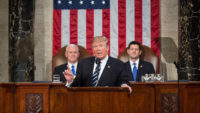
When it comes to public infrastructure, Americans face a stark policy choice this November. More than any president since Franklin Delano Roosevelt, Barack Obama has made investing in infrastructure central to his presidency. Mitt Romney, on the other hand, says little about issues like transportation and housing. When he does, it is to suggest cuts to programs and agencies that provide them.
The current administration encourages cities and states to spend federal money on projects that enhance the public realm. The interstate-highway system often cut neighborhoods in half or separated cities from their waterfronts. Wary of repeating those mistakes, the Department of Transportation has launched a competitive grant program—Transportation Investment Generating Economic Recovery (TIGER)—that rewards integrating housing with new roads or mass transit so as to maximize benefits and minimize environmental degradation.
Romney’s domestic agenda has essentially one goal: spend less money. He has pledged to balance the budget while cutting income-tax rates by one-fifth and increasing the defense budget. The only way to do so would be to drastically cut domestic discretionary spending. He refuses to divulge exactly which domestic programs he would cut, or by how much, on the grounds that Democratic criticism of such proposals could hurt his chances of winning. The few specifics he has offered—eliminating funding for National Public Radio and Amtrak—are far too small to cover his tax cuts, much less the existing budget deficit. It is safe to assume that most infrastructure programs would be reduced, and possibly abandoned entirely. At one April fundraiser in Palm Beach, Florida, reporters standing outside overheard Romney speculating that he might eliminate the Department of Housing and Urban Development (HUD).
That would be a dramatic shift from the Obama administration, which has used HUD, through its signature Office of Sustainable Communities, to promote smart growth. The Sustainable Communities program offers grants and technical assistance to assist cities and counties in developing transit-oriented housing and revitalizing their downtowns. HUD Secretary Shaun Donovan has also sought to improve the appeal and functionality of public housing through the Choice Neighborhoods program.
The biggest infrastructure investment in the Obama years is already in the past. The American Recovery and Reinvestment Act of 2009, known as the stimulus bill, contained $35.7 billion in spending for transportation, from highway improvements to constructing high-speed rail lines. An additional $29.2 billion went to other infrastructure investments, such as building water and sewer lines and expanding broadband. In 2011, the president proposed a follow-up called the American Jobs Act that would have created a national infrastructure bank, which would borrow some federal funds and leverage private investment to provide a steady revenue source to supplement the declining federal highway fund.
But with Republican control of the House of Representatives, it has no chance of passage. In the unlikely event that Democrats held the White House and Senate while retaking the House, the American Jobs Act and a six-year extension of the federal transportation law would be Obama’s two most likely second-term infrastructure investments.
Ironically, Romney was once an advocate for smart-growth initiatives. When he was governor of Massachusetts, he created the Office of Commonwealth Development and put Douglas Foy, an environmentalist, in charge of it. Through the office, Massachusetts employed anti-sprawl policies such as issuing a pedestrian-friendly highway design manual and making it a priority to fix existing roads over building new ones. Romney also signed a law that offered incentives to towns that zoned to allow higher-density and mixed-use development. As with other progressive stances, Romney abandoned this agenda when he started running for president.
If you speak with advocates for cities, transportation spending, or smart growth, you will often hear a hopeful refrain: that if Romney wins he may govern as the moderate former governor, not the conservative who ran for president. But Romney’s selection of Wisconsin Rep. Paul Ryan, author of a budget plan more extreme than his own, as his running mate is not an encouraging sign for urbanists. Until recently, support for infrastructure investment was a rare issue of bipartisan agreement in Washington. But those days are over, and the two parties are as polarized on these policies as on all the others.


